The Association for Project Management (APM) lists the business advantages of effective project management as including: strategic alignment, clear focus and goals, quality control, realistic ambitions, and leadership and direction.
It’s no wonder that organisations are always on the lookout for project management professionals with the understanding, skillset, and experience to help them achieve project success. After all, according to the Project Management Institute (PMI)’s Pulse of the Profession report, organisations see an average of $122 million wasted for every $1 billion invested due to poor project performance.
Gaining a robust understanding of the principles, techniques, frameworks, templates, and tools that deliver results in the project management space is, therefore, critical to high productivity, high performance, and high profits.
What are the principles of project management?
Project management principles refers to the foundational guidelines that help to deliver projects. However, depending on the source used, the exact number of project management principles can vary – anywhere from three through to fifteen.
For example, the Project Management Institute (PMI)’s PMBOK Guide – which stands for Project Management Body of Knowledge – is a structured framework of best practices to help manage projects from start to finish. Its five phases are: project initiation, project planning, project execution, project performance, and project closure.
However, while there may not be a consistent, universally agreed set of principles, many do share similar themes and aspects that meet project needs and contribute to project success. These generally include versions of:
- project objectives. This involves defining the project goals, project scope, and project deliverables right at the very beginning (and ensuring they are SMART).
- project planning. This focuses on designing and developing an in-depth outline of the project, encompassing project activities, project timelines, project budgets, project resource management and allocation, and project dependencies.
- project stakeholders. This centres on engaging relevant, key stakeholders – including the project team – throughout the duration of the project lifecycle, and factoring in their diverse needs and expectations.
- project risk management. This involves conducting a risk assessment to identify potential issues and put strategies in place to minimise them.
- project monitoring. This focuses on assessing project progress and performance on an ongoing basis, in line with the project objectives and plan, and taking corrective action as required.
What are some different types of project management methodologies, principles and frameworks?
What’s the best way to take a project from initial plan to final execution – and ensure that it’s successful? Project managers have plenty of options available to them, depending on the project’s specific needs and requirements.
There are numerous different approaches to project management, and they differ in how they are structured and organised. Popular options include:
- Agile – Agile project management is among the most common, universal principles and processes, based on collaboration, speed and efficiency, iterative, data-driven working, and the value of individuals.
- Waterfall – A traditional project management approach that is also known as the software development lifecycle (SDLC). Following a linear process, tasks cascade down (hence the name), and are organised sequentially and according to dependencies.
- Scrum – Divides a project cycle into short sprints (usually of one or two weeks), and generally headed up by a ‘Scrum master’ who leads daily meetings featuring progress updates, demos, and retrospectives.
- Critical Path Method (CPM) – Identifies and schedules the most critical project activities in order to manage projects at scale and accurately map both milestones and deliverables.
- Lean – The central aim of this methodology is to eliminate waste, resulting in a highly simple, ‘lean’ framework. The goal is to do more with less, maximising both teamwork and efficiency. Lean approaches suit project teams of all sizes, but are particularly suited to those with efficiency concerns.
Other popular methodologies include Kanban, Scrumban, PRINCE2, Six Sigma, critical chain project management (CCPM), and extreme programming (XP). Many of these methodologies and frameworks are used in conjunction with each other.
So, how do you select the right project management methodology for your needs? First of all, there is no one-size-fits-all approach, and certainly no right or wrong. To help narrow down the available options, it’s worth asking a series of questions before you get started.
These include:
- What is the size of the project team?
- How does the project team prefer to work?
- Does your industry change frequently – and so would a consistent or flexible approach suit best?
- What is the overarching project objective?
- Is your project fairly simple or more complex?
- Do you need a method that facilitates specialisation within key roles, or will team members be undertaking similar work?
What project management techniques are used to track progress?
Examples of common techniques and tools used to monitor performance throughout the project management process include Gantt charts, Kanban boards, and burn-down charts – however, many alternatives are also used to assess project status, based on different metrics.
Gantt charts are visual timeline representations of project roadmaps, detailing how specific tasks are advancing in relation to the time allocated for them. They often feature start and end dates for tasks, milestones, dependencies that exist between tasks, and oversights.
Kanban boards use labelled columns to represent the various stages and workflows of a project in real-time. For example, ‘To-do’, ‘In progress’, ‘Review’, and ‘Complete’. Software tools such as Jira, Trello, Excel, and Asana are often used to create boards that entire teams can access.
Burn-down charts track outstanding tasks against time available, enabling project managers and teams to visualise progress and make predictions as to when tasks may be completed based on current performance and velocity.
What skills do the best project managers have?
Successful project managers – whether Project Management Professional (PMP)-certified or not – must develop a wide range of project management skills to support their endeavours. These encompass leadership, technical ability, and interpersonal qualities.
Key skills required by project management specialists:
- Communication
- Problem-solving
- Critical-thinking
- Adaptability and change management
- Organisation
- Negotiation
- Technical expertise
- Team management.
Gain the skills, insights, and tools to drive project performance
If you’re ready to take the next step in your career – and want to develop specialist project management expertise to ensure your projects are executed successfully – choose our 100% online MBA with Project Management.
With highly flexible, 100%-online courses that fit around your existing commitments, you can upskill and prepare for career progression from the comfort of your own home – and in a way that suits you. You’ll become adept at managing projects across the entire lifecycle, making use of the latest project management tools, approaches, and developments in the field. Alongside this, you’ll gain broader understanding across the business management and leadership spectrum, cultivating a highly developed skill set that can help you to thrive in competitive job markets.






